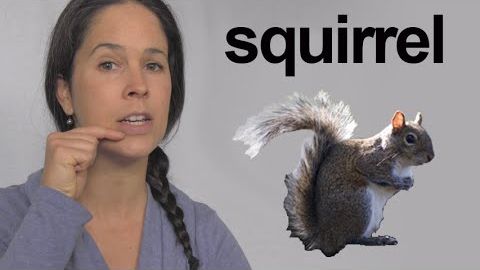如何給Squirrel發音-美式英語發音 (How to Pronounce Squirrel - American English Pronunciation)
Caurora 發佈於 2021 年 01 月 14 日  沒有此條件下的單字
沒有此條件下的單字US /prəˌnʌnsiˈeʃən/
・
UK /prəˌnʌnsiˈeɪʃn/
- n. (c./u.)發音;正確發音;發音方式;發音指南
US /ɪn'gedʒ/
・
UK /ɪn'ɡeɪdʒ/
- v.t.交戰;交手;雇用;吸引;參與;從事;嚙合;承諾
US /ɪgˈzædʒəreɪt/
・
UK /ɪgˈzædʒəreɪt/
